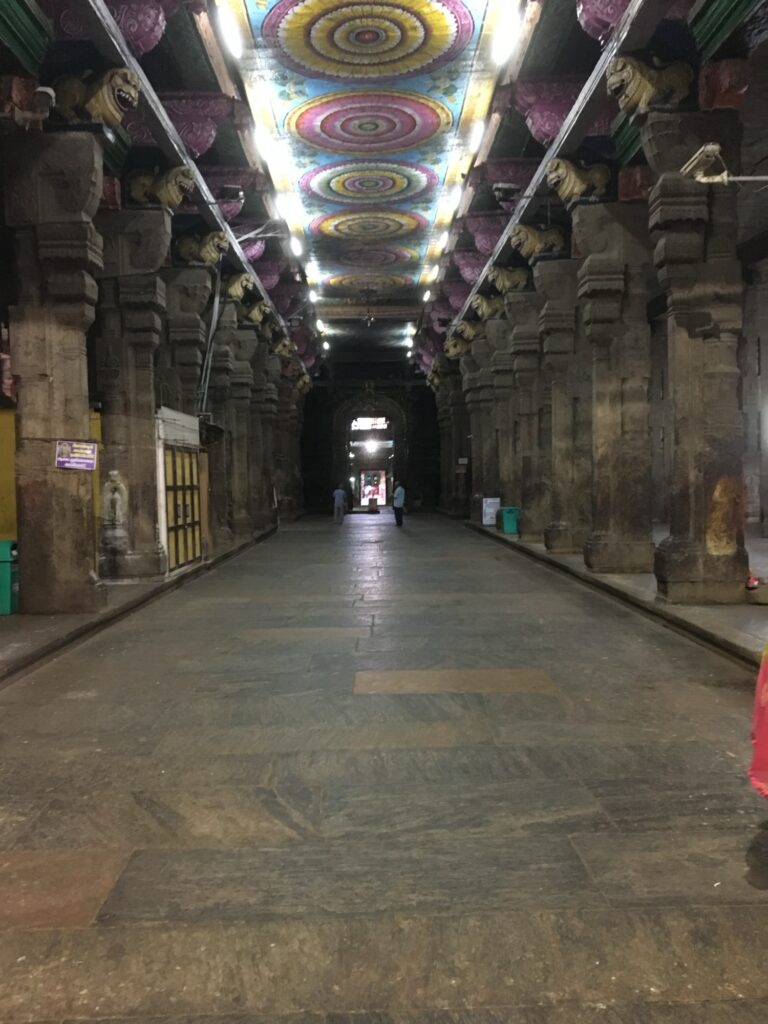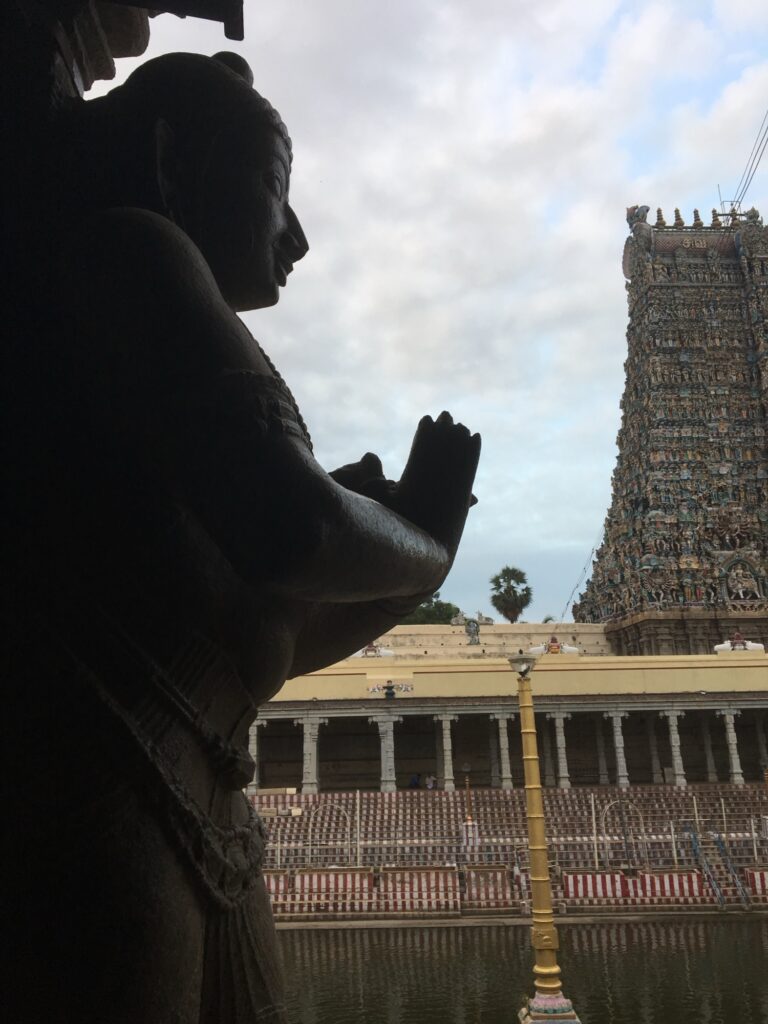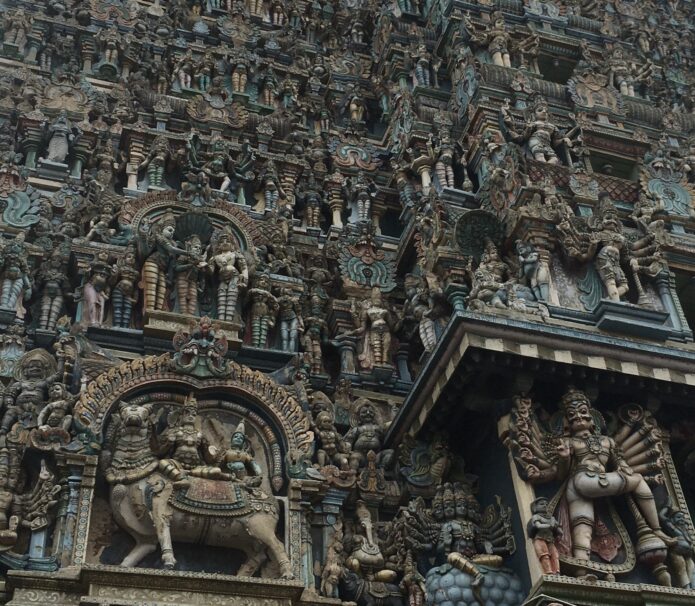Some places demand silence. Not because they forbid noise, but because they leave you speechless. Meenakshi Amman Temple does that to me. Every single time.
I went yesterday. And I saw scaffolding. It wrapped around the gopurams, covering the intricate sculptures. It was early in the morning. So, no workers, just stillness. If this much care is going into restoring it, imagine what it took to build it. No machines, no shortcuts—just patience, skill, and intelligence.
This temple has stood for nearly 2,500 years. It dates back to the Sangam period (6th century BCE), though much of what we see today was expanded in the 16th century by the Nayak rulers. It has survived wars, invasions, and the weight of time. Its corridors have heard prayers, wishes, and whispered hopes from millions. Mine included. Every single one of them.
Phones and cameras are not allowed inside after a fire in 2018. Perhaps the temple authorities trust that your memory has at least some storage space left. Later, as I scrolled through my old photos, I realised something—I had taken pictures of the ceilings, the pillars, the gopurams. But not the Yazhis. Perhaps I had wisely chosen to avoid making eye contact with a stone creature with teeth bigger than my head.
And yet, Yazhis are among the most stunning sculptures in the temple. These mythical beasts are carved with an astonishing mix of power and grace—lion-like bodies, an elephant’s trunk, a serpent’s tail. Strong claws. Giant teeth. A large penis. Elaborate decorations, all aesthetically done. A creature so fierce and fabulous that Hollywood fantasy films could learn a thing or two. If they ever reboot Jurassic Park with mythical beasts, I know where they should start. And these aren’t just still figures either—the giant sculptures are so elaborately done, they seem ever ready to jump out of the pillar and take on anyone into nonsense!
This time, I stood before them, staring. Ferocious yet elegant. My father once told me they were load-bearing structures. I had laughed. Who would carve something so intricate just to support a pillar?
But he was right. The Yazhis do hold up the structure, but they also hold up something else—imagination. Someone, centuries ago, looked at a block of stone and saw more than function. They saw movement, myth, and life itself. And they brought it to life.
As a child, I found them terrifying. Now, I find them familiar, almost reassuring. They have always been there. A solid as they were. My needs have shifted.
A Temple That Soothes the Soul
Whenever I visit with much time at hand, I just stand and stare. At the Yazhis. At the ceilings. At the sheer audacity of it all.


This is beyond religion. It is devotion, yes—but also craftsmanship, vision, and love.
And that is what makes it spiritual. Not just the rituals or the prayers, but the feeling of standing in a place that has stood for centuries. A place that has seen time pass but has remained unwavering. A place that, even in its silence, speaks.
It does something to the soul. It soothes, steadies, strengthens. It slows you down, pulls you iout of the present. For a few moments, the rush of the outside world fades. The doubts, the unfinished tasks, the endless scrolling—all of it seems distant.
There is a certain weight to this place. Not the kind that burdens you, but the kind that anchors you. It puts life back into your step. It reminds you that things of value take time, that endurance is built stone by stone. It gives you the courage to face the next uncertain moment.
In more than one sense, this is home.
Not in the way four walls define home, but in the way something familiar holds you when you need it most. In the way it reassures you that it has been here long before you arrived and will remain long after you leave.
Some long-form things are timeless. They stand tall, defying time and culture. Like the gopurams of Meenakshi Amman Temple. To me, they are a firm reminder that better is always possible.
Every single time I get there.






